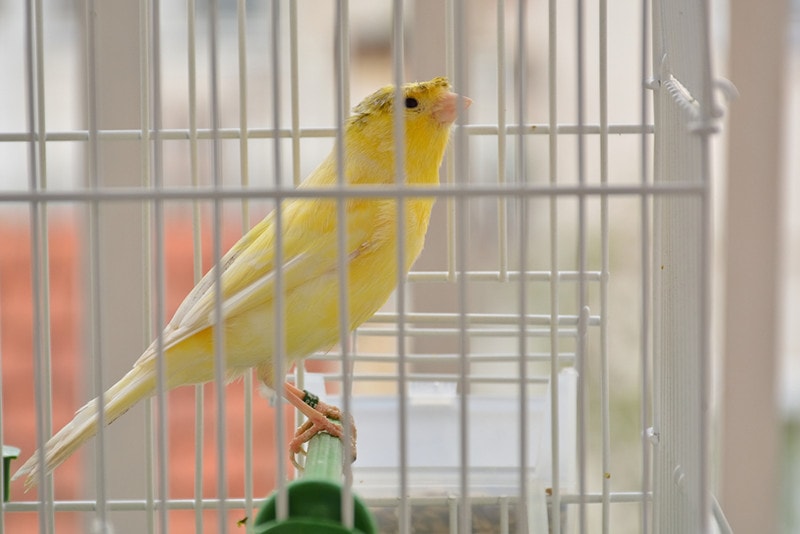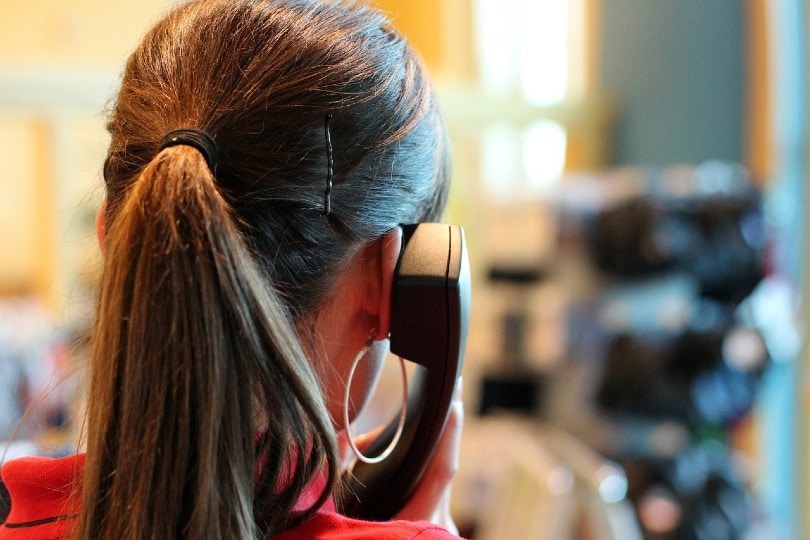How to Protect Your Pet Birds From Theft (2024 Guide)
By admin / January 18, 2025 / No Comments / Pet Dogs
Pet flipping is the practice of stealing a pet from its owner with the intent of selling it to make a profit. Thieves know that some bird species are “big ticket items” that will fetch them a lot of money, so they’ll take brazen action to steal these birds to make some easy cash.
Even if bird-flipping is relatively rare compared to more common household pets like dogs, taking precautions to protect your pet against theft is worthwhile. Keep reading to find tips on how to do just that and learn what to do if your pet gets stolen.
The 6 Steps to Protect Your Birds From Theft
1. Don’t Advertise That You Have Birds
As much as you want to shout from the rooftops that you have beautiful pet birds, keep a low profile when talking about your birds. This means don’t post about them on social media and don’t talk to strangers about them. You don’t owe this kind of information to anyone, and thieves can’t steal what they don’t know exists.

2. Secure Your Home
Your best defense against thieves, be it those interested in “pet flipping” or those looking to score some pricey jewelry, is to spend money on better securing your home. For example, install high-quality locks on all the doors and keep them locked at all times (even when you’re home). Another common entry point for thieves that people often overlook is windows, so make sure all your accessible windows have locks, too.
Invest in a security system for further protection, and make sure there’s a sign outside your home advertising that it is protected by whatever security company you use.
You may also wish to install cameras outside your home so you can always keep an eye open for suspicious behavior. Installing a camera in your bird’s room is another option. Though that won’t deter a burglar, it can give you a better look at their face so you can identify them quicker.

3. Work Together With Your Neighbors
If you like your neighbors, talk with them about forming a neighborhood watch group to watch for unusual activities and report any suspicious behaviors. If you trust your neighbors, you can tell them that you have exotic birds and that there would be no reason for anyone to remove them from your home without you being present.

4. Consider Microchipping
More and more bird owners are starting to microchip their pets to identify them faster if stolen. The microchip gets implanted into your bird’s breast muscle. It has a capsule around it that prevents it from breaking down, so it’ll last your pet’s lifetime.
Microchips have unique codes that can be read by special scanners. Make sure you write down your bird’s code and keep it in a safe location.
If your bird is too small to be microchipped, you can identify them by using a leg ring. Don’t forget to keep documentation of the leg band number.

5. Keep Them Out of Sight
Visibility is huge for thieves; if they see something they want, they’ll stop at nothing to get it. So, avoid putting your bird’s cage on your porch or in front of a window that’s easy to see from the street. As much as you want your pet to be able to see outside and feel the sunshine on a warm summer’s day, keeping them where they’re visible to strangers is blatantly advertising to the world that you have an exotic (and expensive) pet.
Thieves know that birds are expensive to buy. Even if they don’t want to bird-nap your pet, seeing your bird in the window tells them that you might have other nice, expensive things worth stealing.

6. Document Your Bird
When you buy home insurance, you take stock of everything you own. A home inventory makes making claims easy and fast. We recommend you document your bird in much the same way.
Take portrait photos of it from every angle. Get up close and personal for some close-up shots, too. The more pictures you have, the easier it’ll be to identify your bird if it gets stolen. These photos will be useful if you need to make missing pet signs or post images of your bird on lost pet websites. Take shots of any distinguishing features, such as missing toenails.
Keep a list of your bird’s vocabulary and the sounds it makes.

What to Do If Your Bird Is Stolen
Even if you do everything right, you still might be a victim of a clever and determined thief. If your bird is stolen, there are several things you need to do.
1. Call the Authorities
As soon as you notice your bird is missing, call the authorities. File a detailed police report, including the last time you saw your pet and if you noticed anything suspicious in your neighborhood in the time leading up to the theft.

2. Notify Your Neighborhood Watch Group
If you’ve formed a neighborhood watch group with your neighbors, tell them immediately that your bird was stolen. They can look out for suspicious behaviors and may even be able to check their security cameras for evidence of the thief.
3. Check the Internet
Websites like Facebook and Reddit often have community forums where you can go to report a lost or stolen pet. Make Facebook posts public so they can be shared by the people on your friend list and in those community groups.
Check online classifieds like Craigslist or Facebook Marketplace to see if anyone is trying to sell your stolen bird.

4. Get the Word Out
It may be hard to believe, but not everybody uses the internet. You can reach more people by getting the word out via newspaper advertisements and good old-fashioned fliers. Use the images you took of your bird to create fliers to hang in your community. Be sure to include your contact information so people that may have information about your pet can get in touch with you.
5. Look for Advertisements in Neighboring Areas
Some thieves may be “old school” and still use print advertising to sell stolen goods. Check for advertisements in the newspapers of neighboring cities and states or provinces. Thieves are getting smarter and learning to sell their stolen goods outside of the city they took them from to avoid suspicion.

6. Contact 911 Parrot Alert
911 Parrot Alert is an international registry and central database for all lost, stolen, and found companion birds. The website is a little outdated (there are birds on the front page that were found in 2011!), but it can be a great resource, regardless.
7. Never Approach the Thief Alone
If you believe you’ve located your pet and the thief who stole it, never approach the person without contacting your local authorities. A thief could be highly unpredictable, and the last thing you want to do is put yourself in danger trying to save your pet.
Final Thoughts
You’ve invested so much of your time and money into the health and safety of your bird, so it only makes sense to take every precaution possible to keep it safe and sound. Luckily there are several things you can do right now to protect your pet, like form a neighborhood watch or move it to a place in your home where it isn’t on display.
Unfortunately, the unthinkable can happen even with the right safety precautions in place. If your bird does wind up in the hands of a thief, stay calm and act quickly to increase your chances of a successful recovery.
Featured Image Courtesy: Pixabay
